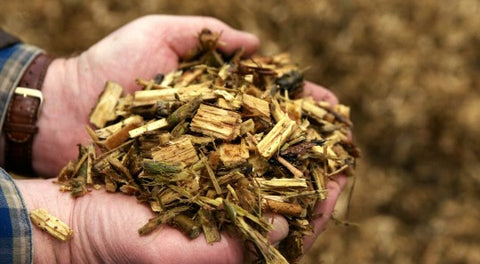There is a counter on theworldcounts.com that shows us the amount of resources being mined from Earth globally. Not to mention that this counter is increasing every second and it will scare you for the simple reason that number itself is too large. This number shows us popular images of industrial chimneys blowing out smoke in the atmosphere. These images have led us to believe that only the larger parties are guzzling energy. Actually, it has been estimated that an individual uses up to 16 kilos of minerals, fossil fuels, and metals every day [1]. Contrary to popular belief, the majority of our energy spending is related to our day-to-day activities. Particularly, these activities include heating water or driving our vehicles.
It took millions of years for the Earth to create its energy resources while just a few decades of reckless usage by mankind to deplete it. The rate at which these resources are replenished is very slow. Conversely, the rate at which they are being diminished is very high. Hence, it becomes imperative that we find alternatives to non-renewable forms of energy. As a matter of fact, these alternatives are available in the form of renewable energy sources. Simply speaking, renewable energy sources are environmental-friendly sources of energy. Not to mention that these resources are either available in an inexhaustibly or they can be replenished in a short period.
Solar energy is the energy derived from sun’s heat and light. There are two ways to use solar energy. One is Solar Photovoltaics. Solar Photovoltaics can be used to produce electricity. Another is Solar Panels. Solar Panels can be planted on roofs of residences and can be used in ovens, gas stoves or even as water heaters. About 10 watts energy per square feet of solar panels can be generated. Considering this and assuming a typical household will consume a kilowatt of power in a day; a few square feet of solar panels can suffice for basic everyday activities. At least, it will contribute to half of your needs. [2] [3]

Wind energy is utilized to produce electricity in windy regions. An example of a windy region is the United Kingdom. Even more, this idea can be implemented on a smaller scale in our homes. A small wind turbine can be erected on the top of your house. This will be about a 2.5kW grid. In fact, this can contribute to 30% of your household electricity. [3]

Biomass is the energy obtained due to combustion of the biodegradable and organic matter. Such organic matter includes everyday natural objects like grains, organic waste products and chips, logs or pellets of wood. The heat derived from its combustion can be used directly. It can also be used as biofuel. The heat obtained from biomass can be used in biomass stoves, room heaters or boilers as well. [4]

Another renewable form of energy now is renewable natural gas (RNG) or biomethane. RNG or biomethane has become omnipotent in our daily lives. For instance, RNG gasses can be used in place of conventional natural gas. They are biogases produced due to combustion of organic matter. RNGs have become popular due to their use of Compressed Natural Gas (CNG). Specifically, CNG is used to drive vehicles these days. It can also be used as Liquefied Natural Gas (LNG). Moreover, LNG is pipeline-quality gas supplied to homes and used in cooking stoves and ovens. [5]
Considering the above and many more forms of renewable energy, the concept of renewable energy is no more just a chapter in our high school textbooks. To put it briefly, it needs to thrive and resonate in our everyday lives. Finally, let us promise to use more of renewable energy. In this way, we can take the first few steps in a long journey to save our fragile planet.
Sources
[1] "Tons of Resources Mined from Earth - Globally, This Year." The World Counts. N.p., n.d. Web. 25 May 2017.
[2] "Tons of Resources Mined from Earth - Globally, This Year." The World Counts. N.p., n.d. Web. 25 May 2017.
[3] "Renewable Energy in Your Community." Renewable Energy in Your Community - Brighter Futures Together. N.p., n.d. Web. 25 May 2017.
[4] Barto Barton, G.m. "Definition of Biomass Samples Involving Wood, Bark and Foliage." Biomass 4.4 (1984): 311-14. Web.n, G.m. "Definition of Biomass Samples Involving Wood, Bark and Foliage." Biomass 4.4 (1984): 311-14.Web.
[5] "Renewable Natural Gas (Biomethane) Production." Alternative Fuels Data Center. U.S. Department of Energy, n.d. Web. 25 May 2017.















